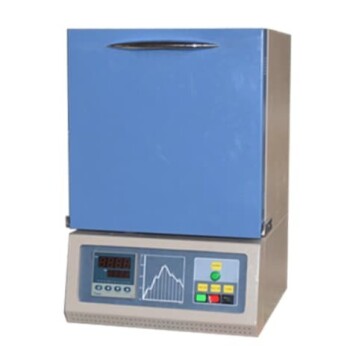Inert atmosphere conditions refer to controlled environments where chemically inactive gases replace reactive atmospheric components like oxygen and carbon dioxide. These conditions are critical in processes like powder bed fusion, where even trace amounts of reactive gases can compromise material integrity. By using inert gases such as argon or nitrogen, industries prevent oxidation, contamination, and unwanted chemical reactions, ensuring consistent results in sensitive applications like metal additive manufacturing or semiconductor production.
Key Points Explained:
-
Definition of Inert Atmosphere
- An inert atmosphere is a chemically inactive environment, typically created by replacing air with non-reactive gases like argon, nitrogen, or helium.
- Key purpose: To eliminate reactive elements (e.g., oxygen, moisture) that could alter material properties or cause defects during industrial processes.
-
Why Inert Atmospheres Matter
- Prevents Oxidation: Reactive gases in air can degrade metals or alloys during high-temperature processes like sintering or welding. An inert atmosphere furnace ensures materials retain their desired properties.
- Avoids Contamination: In powder-based manufacturing (e.g., 3D printing), inert gases shield materials from airborne particles or chemical reactions that could compromise product quality.
- Enables Precision: Semiconductor fabrication and pharmaceutical production rely on inert atmospheres to maintain ultra-clean conditions.
-
Common Applications
- Additive Manufacturing: Powder bed fusion (e.g., selective laser melting) requires inert gases to prevent powder oxidation and ensure uniform melting.
- Heat Treatment: Processes like annealing or brazing in furnaces use inert atmospheres to avoid scaling or decarburization of metals.
- Chemical Storage: Sensitive chemicals (e.g., lithium) are stored under inert gases to prevent degradation or hazardous reactions.
-
Gases Used
- Argon: Heavier than air, ideal for displacing oxygen in enclosed systems like furnaces.
- Nitrogen: Cost-effective for large-scale applications but unsuitable for reactions with nitrogen-sensitive materials.
- Helium: Used in leak detection or when low-density gas is needed.
-
Implementation Challenges
- Cost: High-purity inert gases and airtight equipment (e.g., sealed chambers) increase operational expenses.
- Monitoring: Continuous gas purity analysis is essential to maintain inert conditions, requiring sensors and control systems.
-
Future Trends
- Advances in gas recycling systems aim to reduce costs, while smart sensors improve real-time atmosphere control.
By understanding inert atmosphere conditions, industries can optimize processes that demand pristine environments—whether in cutting-edge manufacturing or preserving sensitive materials. Have you considered how subtle shifts in gas composition might impact your specific application?
Summary Table:
| Key Aspect | Details |
|---|---|
| Definition | Chemically inactive environment using gases like argon or nitrogen. |
| Primary Benefit | Prevents oxidation, contamination, and unwanted reactions. |
| Common Applications | Additive manufacturing, heat treatment, semiconductor production. |
| Gases Used | Argon (high-purity), Nitrogen (cost-effective), Helium (low-density). |
| Implementation Challenges | High costs for gas/equipment; requires continuous monitoring. |
Optimize your lab or production line with inert atmosphere solutions!
At KINTEK, we specialize in high-performance inert atmosphere furnaces and gas control systems tailored for precision manufacturing, semiconductor fabrication, and additive manufacturing. Ensure material integrity and process consistency—contact our experts today to discuss your specific needs!















